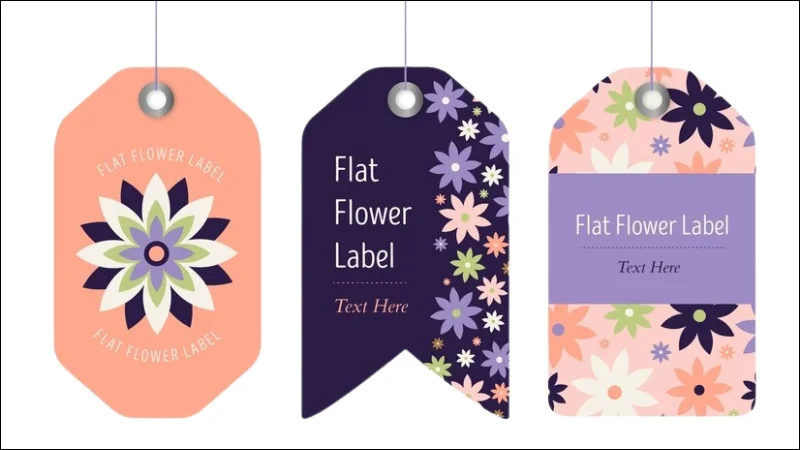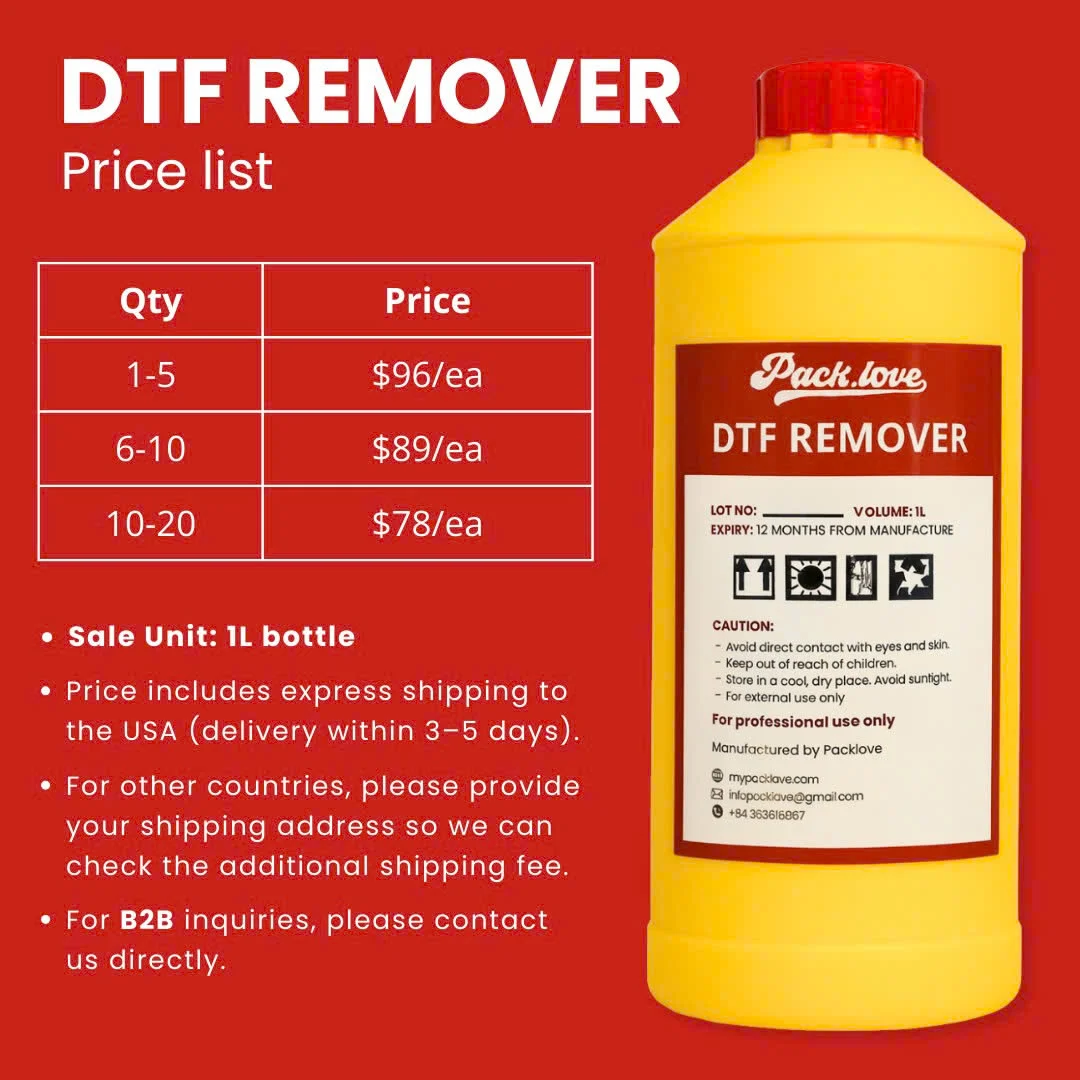Swing Tags: Elevate Your Clothing Brand Image
When browsing clothing, the small cardstock tag hanging off the garment often catches the eye. This component, known as a swing tag (or hang tag in the US), serves more than just displaying the price. This article delves into the world of swing tags, exploring their fundamental purpose, the variety of materials used, essential information they convey, and how strategically designed tags can significantly elevate a clothing brand’s image and customer perception. Readers will gain insights into selecting appropriate materials, designing effective tags, and understanding their role in branding, particularly for small and growing clothing businesses. This article will guide you through these aspects!
1. What is Swing Tag?
A swing tag, often referred to as a hang tag, is a small tag typically made of cardstock or other materials attached to a garment or product, usually by a string, plastic fastener, or ribbon. Unlike sewn-in labels, swing tags are designed to be removed by the consumer before wearing the item.
Their purpose extends far beyond simply indicating the price. Swing tags serve several crucial functions:
- Branding: They act as a mini-billboard, prominently displaying the brand logo, name, and sometimes a tagline, reinforcing brand identity at the point of sale.
- Information Conveyance: Swing tags provide essential details that might not fit on sewn-in labels, such as size, material composition, care instructions (though often duplicated on care labels), style number, and barcode for inventory management and checkout.
- Marketing & Storytelling: Brands utilize this space to communicate their story, highlight unique selling propositions (like eco-friendly materials or manufacturing processes), announce promotions, or direct customers to websites and social media channels via QR codes.
- Perceived Value: A well-designed, high-quality swing tag can enhance the perceived value and appeal of the garment, contributing to the overall customer experience.
- Differentiation: Unique tag shapes, materials, finishes, and designs help a product stand out from competitors on crowded retail racks.

2. Types of Swing Tags based on Material
The choice of material for a swing tag significantly impacts its look, feel, and durability, directly influencing the brand’s perceived quality. Various materials cater to different aesthetic preferences, budgets, and sustainability goals.
Paper/Cardstock: This is the most common and cost-effective option. Paper tags offer versatility in printing, thickness (measured in GSM – grams per square meter), and finish.
- Coated Paper: Features a smooth surface (often glossy or matte) that allows for vibrant printing and offers some resistance to moisture. Examples include art paper or Coucher paper.
- Uncoated Paper: Provides a more natural, textured feel. Kraft paper, known for its brown, recycled look, is a popular uncoated choice, often associated with sustainable or rustic brands. Other options include textured or specialty papers.
- Recycled Paper: An environmentally conscious choice, using post-consumer waste to create tags. The appearance can vary, often having a slightly textured or flecked look.
Plastic: Offers enhanced durability and water resistance compared to paper.
- PVC (Polyvinyl Chloride): A rigid plastic, suitable for durable tags, often clear or frosted.
- PP (Polypropylene): A flexible yet strong plastic, often used for tags requiring tear resistance.
- PET (Polyethylene Terephthalate): Similar properties to PP, known for its clarity and recyclability. Plastic tags can be transparent, opaque, or coloured.
Fabric: Provides a premium, soft touch, often used by high-end or artisanal brands.
- Canvas/Cotton: Offers a natural, textured feel.
- Satin/Silk: Creates a smooth, luxurious appearance.
- Felt: Provides a unique, soft texture. Fabric tags often require specialized printing or embroidery.
Leather/Faux Leather: Conveys a sense of ruggedness, luxury, or heritage. Often used for denim, outerwear, or premium goods. Techniques like embossing (creating a raised design) or debossing (creating an indented design) are common.
Wood/Bamboo: A sustainable and unique option offering a natural, earthy aesthetic. Designs are typically laser-engraved or printed.
Metal: Less common but offers a distinct, premium, and durable tag, often used for luxury items or accessories. Designs are usually etched or engraved.
Selecting the right material involves balancing the desired brand image, the product type, budget constraints, and sustainability considerations. A heavier cardstock generally feels more substantial and premium than a flimsy one, while materials like fabric or leather create a distinct tactile experience.
3. Information Printed on Swing Tags
Swing tags are compact canvases carrying crucial information that bridges the gap between the product and the potential buyer. The details included are carefully chosen to inform, engage, and facilitate the sale. Here’s a breakdown of common elements found on clothing swing tags:
- Brand Logo & Name: This is non-negotiable for brand recognition. Prominent placement reinforces brand identity and helps customers remember the label.
- Product Name/Style Name: Specific identification for the garment style (e.g., “Classic V-Neck Tee,” “Distressed Skinny Jeans”). This helps both customers and staff identify specific items.
- Size: Clearly indicating the garment size (e.g., S, M, L, XL, or numerical sizing) is fundamental for customer selection.
- Price: Displaying the retail price is a primary function, often required by retailers. Sometimes, multiple currencies are shown for international brands.
- Barcode/SKU (Stock Keeping Unit): Essential for retail operations. The barcode (a machine-readable pattern of parallel lines) allows for quick scanning at checkout and efficient inventory management. The SKU is a unique alphanumeric code assigned to a specific product variation (style, size, color).
- Material Composition: Details the fabrics used (e.g., 100% Cotton, 60% Polyester/40% Viscose). This information is vital for customers with allergies, specific preferences, or those seeking particular fabric qualities. Often legally required in many regions.
- Care Instructions: While usually detailed on a permanent sewn-in label, brief care symbols or instructions (like “Machine Wash Cold” or “Dry Clean Only”) might be included on the swing tag as a quick reference.
- Country of Origin: Indicates where the garment was manufactured (e.g., “Made in Vietnam”). This is a legal requirement in many countries, including the US.
- Website/Social Media Handles: Encourages customer engagement beyond the point of sale, directing them to online stores, lookbooks, or community platforms.
- QR Code (Quick Response Code): A scannable matrix barcode that can link customers directly to a specific webpage, video, social media profile, or detailed product information, offering an interactive experience.
- Brand Story/Unique Selling Proposition (USP): A short message highlighting what makes the brand or product special (e.g., sustainable practices, unique design features, ethical production).
The specific information included can vary depending on the brand strategy, product type, target market, and regional legal requirements. However, clarity and accuracy are paramount for all elements presented.
4. Factors to Consider When Designing Swing Tags
Creating an effective swing tag involves more than just placing a logo and price; thoughtful design considers various elements that contribute to the overall brand presentation and customer experience.
- Brand Consistency: The swing tag design should seamlessly align with the overall brand identity. This includes using the brand’s color palette, typography (fonts), logo, and general aesthetic. A tag that feels disconnected from the brand’s other visual elements (like website, packaging, or sewn-in labels) can dilute the brand message.
- Target Audience: Consider who the ideal customer is. A brand targeting a young, trendy audience might opt for bold colors, modern fonts, and perhaps unconventional shapes or materials. A luxury brand, conversely, would likely lean towards elegant typography, premium materials (like thick cardstock, fabric, or leather), and sophisticated finishes (such as embossing or foil stamping). The design should resonate with the intended customer’s tastes and expectations.
- Material & Finish Synergy: The chosen material (discussed previously) heavily influences design possibilities. Glossy paper supports vibrant, photographic images, while uncoated Kraft paper lends itself to simpler, perhaps monochromatic (single-color) or two-tone designs. Finishes like matte lamination (a non-shiny protective coating), spot UV (applying a glossy varnish to specific areas), embossing (creating a raised pattern), or debossing (creating an indented pattern) add tactile interest and perceived value, but should complement the material and overall design.
- Shape and Size: While rectangular tags are standard, custom die-cut shapes (tags cut into specific, non-rectangular forms) can make a brand stand out. The shape could echo the logo, relate to the product type, or simply be unique. However, the size must be practical – large enough to hold necessary information legibly but not so large as to overwhelm the garment or be cumbersome. Consider the size relative to the clothing item itself.
- Information Hierarchy: Decide which information is most important and design the tag to guide the reader’s eye accordingly. The brand logo and price are typically prominent. Use font sizes, weights (boldness), and placement strategically to differentiate between primary information (like brand, price, size) and secondary details (like website or material composition). Avoid clutter; ensure sufficient white space (empty areas) for readability.
- Printing Techniques: Standard offset printing works well for most paper tags. Digital printing can be cost-effective for smaller runs or designs with high variability. Techniques like foil stamping (applying metallic foil), screen printing (often used for fabric or unique surfaces), or laser engraving (for wood or metal) offer distinct looks but come with different cost implications and design constraints.
- Attachment Method: How will the tag attach to the garment? Common methods include plastic swift-tach fasteners, natural string (like jute or cotton), ribbon, or metal ball chains. The choice of attachment should complement the tag’s design and the garment’s style. A rustic tag might use jute string, while a sleek tag might use a thin, black ribbon or a simple plastic fastener. Ensure the attachment method allows the tag to hang correctly and is easy for the customer to remove without damaging the garment.
- Readability: Above all, the text must be easy to read. Choose legible fonts and ensure sufficient contrast between the text color and the background material. Avoid excessively small font sizes, especially for crucial information like price and size.

5. Attaching Swing Tags to Clothes
5.1 How to Attach Swing Tags to Clothes
Attaching swing tags correctly is essential for presentation and preventing garment damage. The method chosen often depends on the garment type, the tag design, the desired aesthetic, and the volume of items being tagged. Here are the common methods for attaching swing tags:
Tagging Gun (Swift Tacher) with Plastic Fasteners: This is the most widely used method in retail due to its speed and efficiency, especially for high volumes.
- Process: A tagging gun uses a needle to pierce the garment (typically at a seam or label) and inserts a plastic fastener (a thin plastic filament with a T-bar on one end and a paddle or loop on the other) through the hole in the tag and the garment.
- Best For: Most apparel types, particularly when speed is essential.
- Considerations: Choose the correct needle type (standard or fine-fabric) to avoid damaging delicate materials. Always attach through a seam allowance (the area between the fabric edge and the stitching line) or the sewn-in brand label, never directly through the main fabric, to prevent creating a permanent hole.
String/Twine (Manual Attachment): This method offers a more traditional or artisanal look.
- Process: A piece of string, twine (like cotton, jute, or hemp), or elastic cord is looped through the hole in the swing tag and then tied securely, often by hand, through a buttonhole, belt loop, zipper pull, or sewn-in label of the garment. Tags may come pre-strung or require manual threading and tying.
- Best For: Brands aiming for a natural, handcrafted, or premium feel. Suitable for lower volume tagging or when a specific aesthetic is desired.
- Considerations: Manual attachment is more time-consuming than using a tagging gun. Ensure the knot is secure but removable by the customer without excessive difficulty.
Ribbon (Manual Attachment): Similar to string, but uses ribbon for a softer, potentially more luxurious appearance.
- Process: A length of ribbon (satin, grosgrain, etc.) is threaded through the tag’s hole and then tied, often in a simple knot or bow, onto the garment, typically through a label or buttonhole.
- Best For: Lingerie, children’s wear, formal wear, or brands wanting a more decorative or upscale presentation.
- Considerations: Like string, this is a manual process. Ribbon knots can sometimes come undone more easily than string knots if not tied tightly.
Safety Pins: A less common method for mainstream retail but sometimes used for specific aesthetics or temporary tagging.
- Process: A safety pin (often stylized, e.g., pear-shaped or colored) is passed through the hole in the tag and then pinned onto a seam or label of the garment.
- Best For: Brands with an industrial, punk, or utilitarian aesthetic; sometimes used for knitwear where a tagging gun might snag threads.
- Considerations: Can leave small holes, even in seams. Must ensure the pin is securely fastened. May not convey a premium image unless the pin itself is a design element.
Plastic/Metal Ball Chains: Often used for accessories or garments with a more industrial or rugged look.
- Process: A short chain with connectors is looped through the tag hole and then attached to the garment, often via a zipper pull or label.
- Best For: Denim, outerwear, accessories, or achieving a specific streetwear style.
- Considerations: Can be more expensive than plastic fasteners or string. Adds a distinct hardware element to the presentation.

5.2 Choosing the Right Method
- Efficiency: For large quantities, tagging guns are unmatched.
- Aesthetics: String, ribbon, or specialty fasteners align better with premium, natural, or handcrafted brand images.
- Garment Type: Use fine-fabric needles or manual methods (string, ribbon) for delicate materials like silk or lace. Avoid piercing main fabrics directly.
- Attachment Point: Always aim for reinforced areas like sewn-in labels, seam allowances, buttonholes, or belt loops to minimize potential damage to the core garment fabric.
Read more:
In essence, swing tags transcend their basic function as simple price indicators. They serve as dynamic tools for clothing brands, acting as tangible representations of brand identity right on the garment. From conveying essential product details like size, composition, and origin, to reinforcing brand recognition through logos and consistent design language, their role is multifaceted.
Ultimately, well-executed swing tags contribute markedly to perceived value, product differentiation, and overall professionalism. For clothing businesses, particularly those starting or scaling, strategically leveraging swing tags is not merely about fulfilling a retail requirement; developing these components thoughtfully is an integral part of building a strong brand presence and enhancing the customer experience at a crucial touchpoint.























